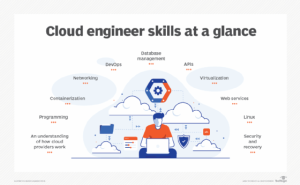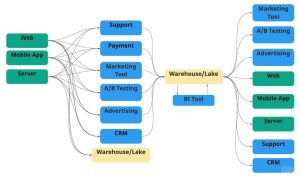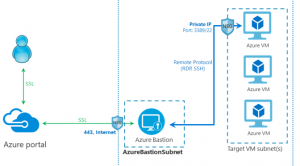
The convergence of artificial intelligence and edge computing promises to be transformative for many industries. Here the rapid pace of innovation in model quantization, a technique that results in faster computation by improving portability and reducing model size, is playing a pivotal role.
Model quantization bridges the gap between the computational limitations of edge devices and the demands of deploying highly accurate models for faster, more efficient, and more cost-effective edge AI solutions. Breakthroughs like generalized post-training quantization (GPTQ), low-rank adaptation (LoRA), and quantized low-rank adaptation (QLoRA) have the potential to foster real-time analytics and decision-making at the point where data is generated.
Edge AI, when combined with the right tools and techniques, could redefine the way we interact with data and data-driven applications.
Why edge AI?
The purpose of edge AI is to bring data processing and models closer to where data is generated, such as on a remote server, tablet, IoT device, or smartphone. This enables low-latency, real-time AI. According to Gartner, more than half of all data analysis by deep neural networks will happen at the edge by 2025. This paradigm shift will bring multiple advantages:
- Reduced latency: By processing data directly on the device, edge AI reduces the need to transmit data back and forth to the cloud. This is critical for applications that depend on real-time data and require rapid responses.
- Reduced costs and complexity: Processing data locally at the edge eliminates expensive data transfer costs to send information back and forth.
- Privacy preservation: Data remains on the device, reducing security risks associated with data transmission and data leakage.
- Better scalability: The decentralized approach with edge AI makes it easier to scale applications without relying on a central server for processing power.
For example, a manufacturer can implement edge AI into its processes for predictive maintenance, quality control, and defect detection. By running AI and analyzing data locally from smart machines and sensors, manufacturers can make better use of real-time data to reduce downtime and improve production processes and efficiency.
The role of model quantization
For edge AI to be effective, AI models need to be optimized for performance without compromising accuracy. AI models are becoming more intricate, more complex, and larger, making them harder to handle. This creates challenges for deploying AI models at the edge, where edge devices often have limited resources and are constrained in their ability to support such models.
Model quantization reduces the numerical precision of model parameters (from 32-bit floating point to 8-bit integer, for example), making the models lightweight and suitable for deployment on resource-constrained devices such as mobile phones, edge devices, and embedded systems.
Three techniques have emerged as potential game changers in the domain of model quantization, namely GPTQ, LoRA, and QLoRA:
- GPTQ involves compressing models after they’ve been trained. It’s ideal for deploying models in environments with limited memory.
- LoRA involves fine-tuning large pre-trained models for inferencing. Specifically, it fine-tunes smaller matrices (known as a LoRA adapter) that make up the large matrix of a pre-trained model.
- QLoRA is a more memory-efficient option that leverages GPU memory for the pre-trained model. LoRA and QLoRA are especially beneficial when adapting models to new tasks or data sets with restricted computational resources.
Selecting from these methods depends heavily on the project’s unique requirements, whether the project is at the fine-tuning stage or deployment, and whether it has the computational resources at its disposal. By using these quantization techniques, developers can effectively bring AI to the edge, creating a balance between performance and efficiency, which is critical for a wide range of applications.
Edge AI use cases and data platforms
The applications of edge AI are vast. From smart cameras that process images for rail car inspections at train stations, to wearable health devices that detect anomalies in the wearer’s vitals, to smart sensors that monitor inventory on retailers’ shelves, the possibilities are boundless. That’s why IDC forecasts edge computing spending to reach $317 billion in 2028. The edge is redefining how organizations process data.
As organizations recognize the benefits of AI inferencing at the edge, the demand for robust edge inferencing stacks and databases will surge. Such platforms can facilitate local data processing while offering all of the advantages of edge AI, from reduced latency to heightened data privacy.
For edge AI to thrive, a persistent data layer is essential for local and cloud-based management, distribution, and processing of data. With the emergence of multimodal AI models, a unified platform capable of handling various data types becomes critical for meeting edge computing’s operational demands. A unified data platform enables AI models to seamlessly access and interact with local data stores in both online and offline environments. Additionally, distributed inferencing—where models are trained across several devices holding local data samples without actual data exchange—promises to alleviate current data privacy and compliance issues.
As we move towards intelligent edge devices, the fusion of AI, edge computing, and edge database management will be central to heralding an era of fast, real-time, and secure solutions. Looking ahead, organizations can focus on implementing sophisticated edge strategies for efficiently and securely managing AI workloads and streamlining the use of data within their business.
Rahul Pradhan is VP of product and strategy at Couchbase, a provider of a modern database for enterprise applications that 30% of the Fortune 100 depend on. Rahul has over 20 years of experience leading and managing engineering and product teams focusing on databases, storage, networking, and security technologies in the cloud.
—
Generative AI Insights provides a venue for technology leaders—including vendors and other outside contributors—to explore and discuss the challenges and opportunities of generative artificial intelligence. The selection is wide-ranging, from technology deep dives to case studies to expert opinion, but also subjective, based on our judgment of which topics and treatments will best serve InfoWorld’s technically sophisticated audience. InfoWorld does not accept marketing collateral for publication and reserves the right to edit all contributed content. Contact doug_dineley@foundryco.com.
Copyright © 2023 IDG Communications, Inc.



